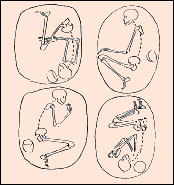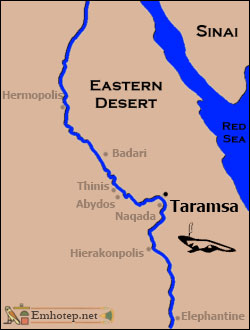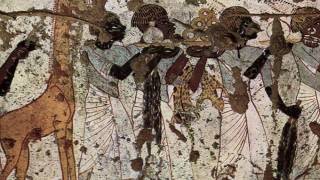From Pits to Palaces: The Evolution of Prehistoric Burial Customs in Ancient Egypt
Source: emhotep.net
It would be easy to think that the ancient Egyptians, for all their amazing accomplishments in the arts and sciences, were morbidly obsessed with death. After all, what do you think of when you imagine ancient Egypt? The Pyramids: tombs. Tutankhamun: a golden mummy. Valley of the Kings: a cemetery. But the truth of the matter is that the Egyptians were obsessed with life, and they fully expected it to continue on the Other Side. Just as we work, save, and invest for our retirement today, the ancient Egyptians prepared for their eternal retirement amongst the gods. Most of the art and artifacts connected to this planning, what we would call the funerary tradition and/or architecture, was considered to be the machinery of the afterlife, the tools and rituals required for the care and feeding of a departed spirit.
But the truth of the matter is that the Egyptians were obsessed with life, and they fully expected it to continue on the Other Side. Just as we work, save, and invest for our retirement today, the ancient Egyptians prepared for their eternal retirement amongst the gods. Most of the art and artifacts connected to this planning, what we would call the funerary tradition and/or architecture, was considered to be the machinery of the afterlife, the tools and rituals required for the care and feeding of a departed spirit.Ancient graves tell us a lot about a given people. The best preserved artifacts often come from tombs and their contents can tell us who is trading with whom, who is fighting and who is getting along, and how the social strata were arranged. The preparation of the body tells us about their beliefs and concerns, and the evolution of the tomb type (taphotype?) often parallels the evolution of the culture in question. How did the Egyptians progress from simple sand pits to Palaces of Eternity such as the mastabas at Giza and rock-cut tombs at Saqqara?
You may be surprised to learn how much we are learning. I know I was. At Hierakonpolis alone archaeologists and Egyptologists are tracing the evolution of funerary architecture from oval sandpits with no real superstructure to speak of, to mudbrick-lined rectangular affairs, to the earliest mastabas, complete with plastered and painted walls—all of this centuries before the first pharaoh. But we are getting ahead of ourselves.
If you think, like I used to, that nothing particularly interesting happens until the Old Kingdom, then venture forth, Gentle Reader, a new vista awaits. We’ll begin 55,000 years ago with the earliest human grave. It was found in… Egypt, where else?
Taramsa
 Given what we know of the ancient Egyptians and their concern for the afterlife, it should come as no surprise that the oldest human grave so far discovered was in Egypt. In 1994, archaeologists digging at Taramsa Hill, located near Qena in Upper Egypt, found the skeleton of an anatomically modern human child buried about 55,000 years ago. Located near the future site of the Temple of Hathor at Dendera, the fragile skeleton had to be fixed with a solution of wood glue to keep it from crumbling to dust.
Given what we know of the ancient Egyptians and their concern for the afterlife, it should come as no surprise that the oldest human grave so far discovered was in Egypt. In 1994, archaeologists digging at Taramsa Hill, located near Qena in Upper Egypt, found the skeleton of an anatomically modern human child buried about 55,000 years ago. Located near the future site of the Temple of Hathor at Dendera, the fragile skeleton had to be fixed with a solution of wood glue to keep it from crumbling to dust.[...]
Read the full article at: emhotep.com
Tune into Red Ice Radio:
Ahmed Osman - Egypt & Christianity
Robert Bauval - Post-Revolution Egypt
Andrew Collins - Beneath The Pyramids, Giza Cave System Rediscovered
John Anthony West - Ancient Egypt






















